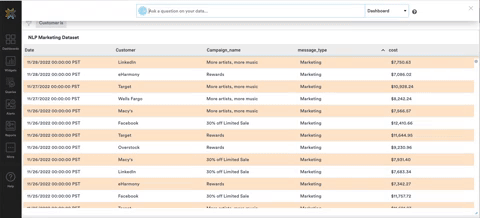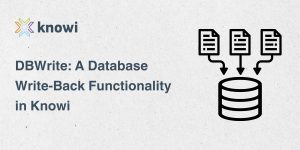Natural language processing (NLP) and self-service analytics have been growing needs for businesses as of late. The ability for business users to reliably ask ad-hoc questions against business data using natural language (similar to a google search) could cut down days’ worth of time going back and forth between analysts, data engineers, and data leads for each question.
So, what is natural language processing? How does it impact making informed business decisions? Read on to find out.
What is Natural Language Processing?
Natural language processing is the concept of programming software to understand human language as it is spoken and provide an intelligent response in return.
Tools such as chatbots, speech dictation, translation services, and voice-controlled virtual assistants (Siri, Google Assistant, Alexa, etc.) all have natural language processing capabilities.

Using Natural Language Processing to Query Business Data
The standard data analytics infrastructure at most companies is either highly technical, where data are gated from business users, or non-existent, aside from monitoring select key performance metrics. Incorporating tools that allow all users to interact with curated datasets by asking plain language questions would be complementary to each scenarios’ existing infrastructure.
In the context of self-service analytics, natural language processing would take in plain language questions, interpret the question with the context of your business’ data, and provide a calculated response.
Natural Language Processing in Practice
In practice, this would look like asking “How many days have trial sign-ups been > 200?” or “show me total spent on marketing quarterly”. In return, you would receive a calculated answer and/or visualization based off of your business’ data in response.

Take a look at this sample marketing dataset. In the search bar, try typing in “what is the total spent on marketing weekly” or “show me total net return over time quarterly by message type”. You should see a result for these queries in seconds.
The power of NLP shines during the data exploration process for data analysts as they are creating dashboards as well as when business users have ad-hoc questions that are fairly straightforward. For companies with little to no data analytics infrastructure, using a tool that supports NLP is one way to gain more insight on your business without having to invest in a highly technical team.
Conclusion
Natural Language Processing is already a part of our everyday lives. From Siri to Google Translate, we interact with software on a daily basis that translate our plain language requests into actions or intelligent responses. From a business standpoint, incorporating tools that use NLP as a means of providing self-service analytics can significantly cut down on data software bloat and propel your business forward in its decision-making process.






